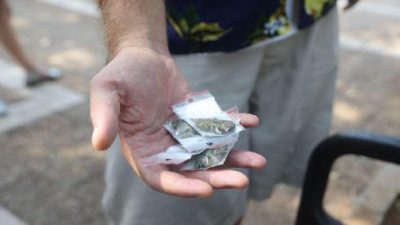
Animals are losing sight of the Milky Way… crickets don’t know when to chirp. For the love of god, turn out your lights
Sleeping with the lights on? A new study has found that artificial lights at night caused crickets to chirp in the daytime in cities. So what’s artificial light doing to us and other animals? We’ve talked about the way light disrupts our hormones. But it’s not just hurting us. We are freaking out the entire animal kingdom. Crickets don’t know when to chirp. Beetles can’t see the Milky Way; hatched turtles can’t find the sea.
Researchers from Tel Aviv University found that exposing male crickets to artificial light at night can mess up their biological rhythms. Nocturnal chirping is the male’s way of calling females to come and mate with him, and its disruption can interfere with reproduction processes and even endanger the entire species.
Previous studies worldwide have shown that light pollution is harmful to many species of animals and plants. The researchers call for reducing night light pollution as possible to enable coexistence of animals and us.
The bigger finding might be that artificial lights are also hurting us. But let’s start with the crickets.
Keren Levy, one of the researchers explains that the distinction between day and night, light and darkness, is a major foundation of life on earth. But humans, as creatures of the day who fear the dark, disrupt this natural order: they produce artificial light that drives away the darkness and allows them to continue their activities at night.
Animals led astray by night pollution
She explains: Today more than 80% of the world’s population lives under light pollution, and the overall extent rises by 5% every year.
For example, dung beetles, that navigate using the Milky Way, lose their way when light pollution increases; sea turtles hatchlings seek the brightest surface in sight – supposedly the sea, and reach the nearby promenade instead.
The researchers monitored dozens of crickets exposed lifelong (from egg to adult stage), to four types of light conditions. They found that crickets exposed to 12 hours of light followed by 12 hours of darkness exhibited cyclic activity rhythms of 24h: they began to chirp when the lights went out and stopped when the lights were turned on again.
See related: A GPS system to save wildlife
Crickets that experienced partial lighting in the dark periods lost their natural rhythms and their synchronization with their environment: 80% followed an individual inner cycle, and 5% lost all rhythm.
Crickets exposed to constant light 24/7 developed their own cycles (71%) or lost all rhythm (29%). The findings indicated that increase of artificial light at night – also known as ALAN- in the laboratory induces loss of rhythmicity at both the individual and population levels.
Keren Levy: “Our study demonstrates that crickets whose light-dark cycle is disrupted behave like teenagers on vacation: active or asleep according to their own inner clock or lacking any rhythm whatsoever.
In fact, light pollution induced by humankind impacts the field cricket and evokes loss of synchronization within the individual, on the population level, and between the population and the environment.
Our findings on ALAN-induced changes in calling song patterns may possibly impair female attraction and reproduction in this species. Our results are in accord with many other studies demonstrating the severe impacts of low levels of ALAN on nature.
“We ask, you, therefore, to help protect our environment and surroundings by turning off the lights in your backyards, on the terrace, in parking lots, and wherever possible. Help us bring the night and the milky way back into our lives and enable nightly coexistence with the creatures around us.”



